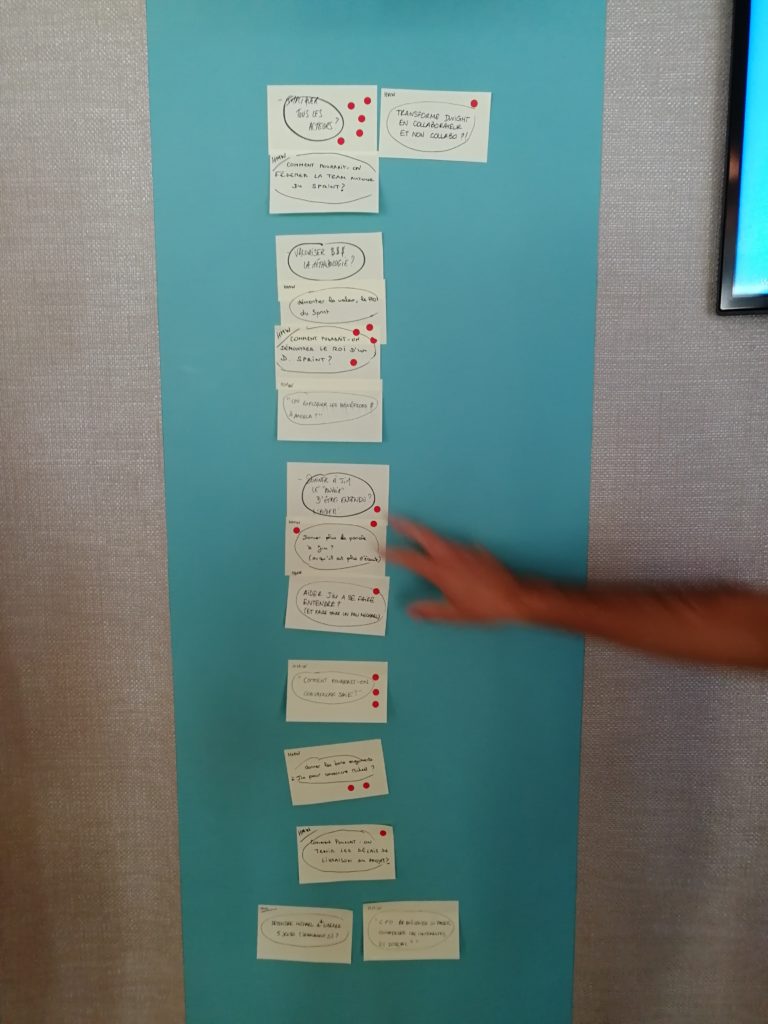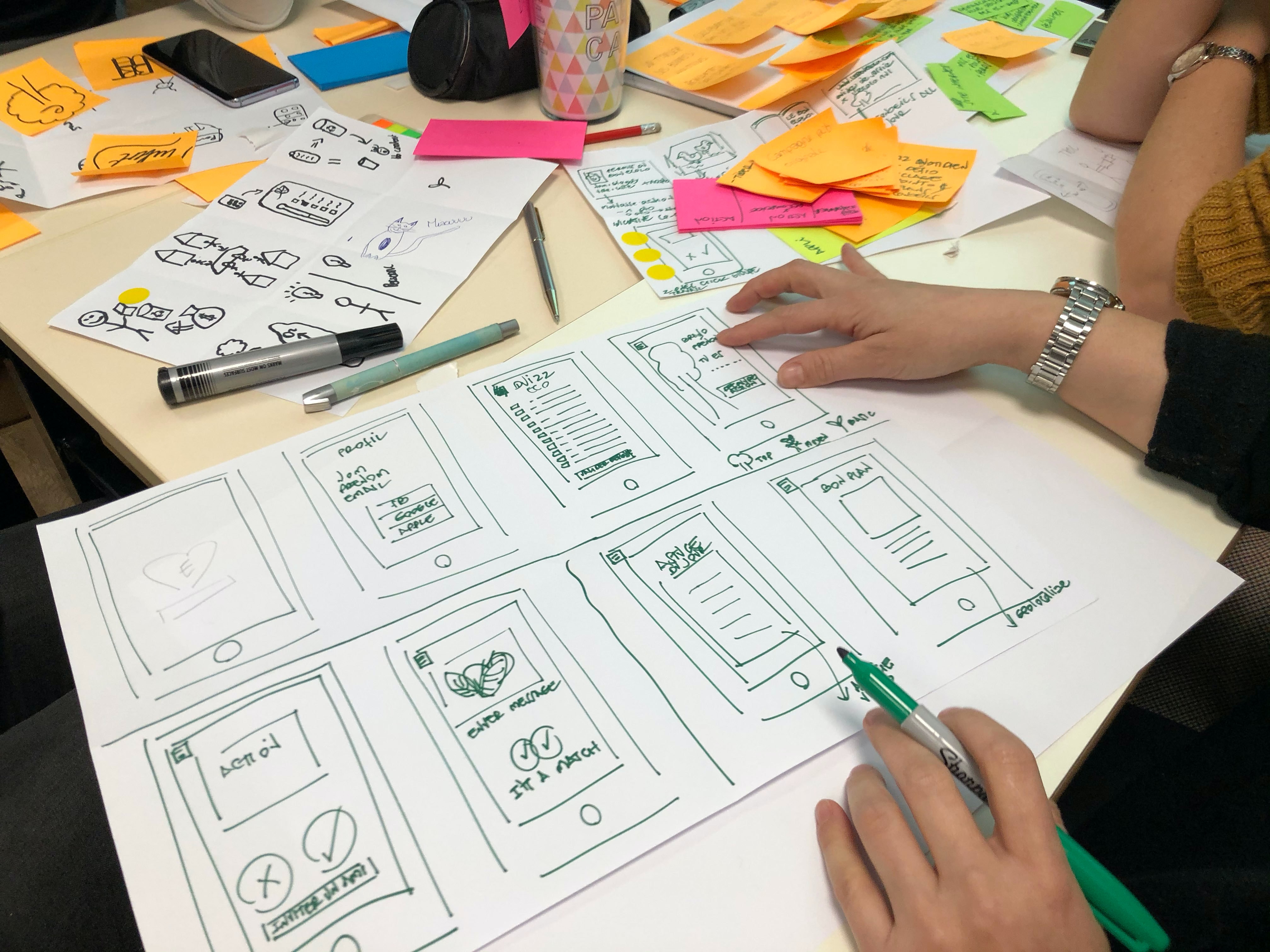With the spread of the coronavirus epidemic and the time spent at home, the company teams have tried in every way to work as usual during these strange and extraordinary times. Generally, the nature of the work involves being present on site but during this time there has been a lot to learn in order to collaborate even at a distance.
In this article you will find interesting ideas for applying the Design Sprint, a practice that allows companies to accelerate recovery and get answers to their problems.
In a post-covid19 period, which leaves us full of doubts and uncertainties, the presence of virtuous practices can really make a difference. We know at D-SPRINT this last period has re-shuffled the cards of the economy. To us it sounds like an opportunity to re-create or transform the world.
Faster, smarter, here is how you have to work if you want to follow your idea. Most of companies have great ideas and do amazing projects but the execution are often winded, just like a link a quick mind in a turtle body…
V-model process, difficulties in transforming IT, taking risk in front of markets evolution, internal politics wars…all things that generate a lack of agility in the whole system. As Albert Einstein would have said ” The definition of insanity is doing the same thing over and over again and expecting a different result.”
So what are we waiting for change the way do, the way we think, the way, the way we create products and services?
Maybe we were just waiting Design Sprint…
What is Design Sprint?
Invented in Google by Jake Knapp, the Design Sprint is a unique 5-day process that aims to answer complex business questions through co-creation, rapid prototyping and testing with targeted customers. A freshy new air is blowing on how to collaborate and be efficient…and if you don’t know what design sprint is, just try it!
You have already lost months into projects, you can at least give the benefit of the doubt for 5 more days and see what happen.
The 5 days of sprint design can be summarized as follows:
First day, focus on understanding the big picture of the problem we are trying to solve.
Day 2, take inspiration from existing ideas and start to work out our solution.
Day 3, criticize all the solutions and we find the best of these.
Day 4, create a rapid prototype with a realistic facade, which should not be usable / functional at this point.
Day 5, interviews with target customers and observation of their reactions while analyzing the prototype
Nowadays, the framework has been proven and also shortened on a 4-days format by AJ&Smart for exemple and it’s called Design Sprint 2.0.

The first day, generally Monday, is the time to focus on understanding the long-term goal. The classic question is the following: “Why are we carrying out this project? Where do we want to be in six months, one or 5 years? “
At the start of the sprint, you need to set a long term goal. This should serve as your beacon to get everyone moving in the same direction.
After defining the long-term goal and sprint questions, start by mapping the customer journey. It is important to understand who your customers are, so conducting research is essential. The next step is to understand how to turn a problem into an opportunity and what is the main problem that consumers have in their customer experience.
The Design Sprint continues on Tuesday, during which the team is encouraged to look for competitors and find examples of existing products that could inspire them to find the solution. Each person should provide a 3 minute demo of their findings in a lightning demo session.



On Wednesday we choose which is the best solution for the prototype. The process of reaching consensus on the best solution can be performed in five stages:
Art Museum. Put all the sketches on a wall to create an art gallery.
Heat map. Each team member is awarded three point stickers to assign to the sketches or parts of the sketches they find interesting.
Speed criticism. Each member selects a design that is not his or her and quickly discusses the solution.
Choose and vote. Each team member is given red dots to choose the best solution and justify their decision.
Supervote. The decision maker makes the last call with three votes (three adhesive points).
On Thursday it will be necessary to create a prototype, dedicating the whole day to this activity. The prototype does not have to be perfect (fake it!) but can be made with software such as Sketch or Keynote, but as UX Designer we are used to do it on Figma or Marvel.
Finally, Friday is the fire test during which the prototype is tested with users. Then we report every insights or feedbacks on the “Wall of Justice”. We will use it to analyze results of each page with the team, make the summary and the follow up.
In this way it is possible to draw more information and understand more about the product and UX design.
Obviously, this whole process has not been possible in the presence of people. Covid-19 has changed the habits of all of us both in daily life and in terms of work. That’s why there has been the spread of the remote design sprint which we will talk about in the next few lines.

Remote Design Sprint alternative
As anticipated, the Design Sprint process has been inaccessible for a few months. Only man’s ability to adapt to any situation has allowed the possibility of applying it even in the months of coronavirus.
It is certainly important to remain faithful to the original version of Design Sprint as it is used and tested by hundreds of organizations around the world. Therefore, many companies had to remotely adapt the version of the Design Sprint, making sure that the changes did not change the true intent of the process.
Think about Design Sprint to prepare a recipe in the kitchen: some ingredients can be replaced, even in terms of quantity, but the result must be the same.
A Remote Design Sprint, therefore, requires that changes are made to some procedures, while ensuring that the process still remains able to answer the company’s questions. Nowadays, the tools are ready and efficient to insure an high quality of the process.
The coronavirus pandemic has thrown a harsh light on economy’s weakness. It impacted all sectors and swept away small and big markets actors. It has created new uses, removed some psychological barriers and gave life to others. It will probably open the door to new opportunities. It is surely the time to change the way we are living, we are consuming, we are learning, we are working. Perhaps more than ever the time to adopt and spread Design Sprint, to innovate and test fast for a better world.
